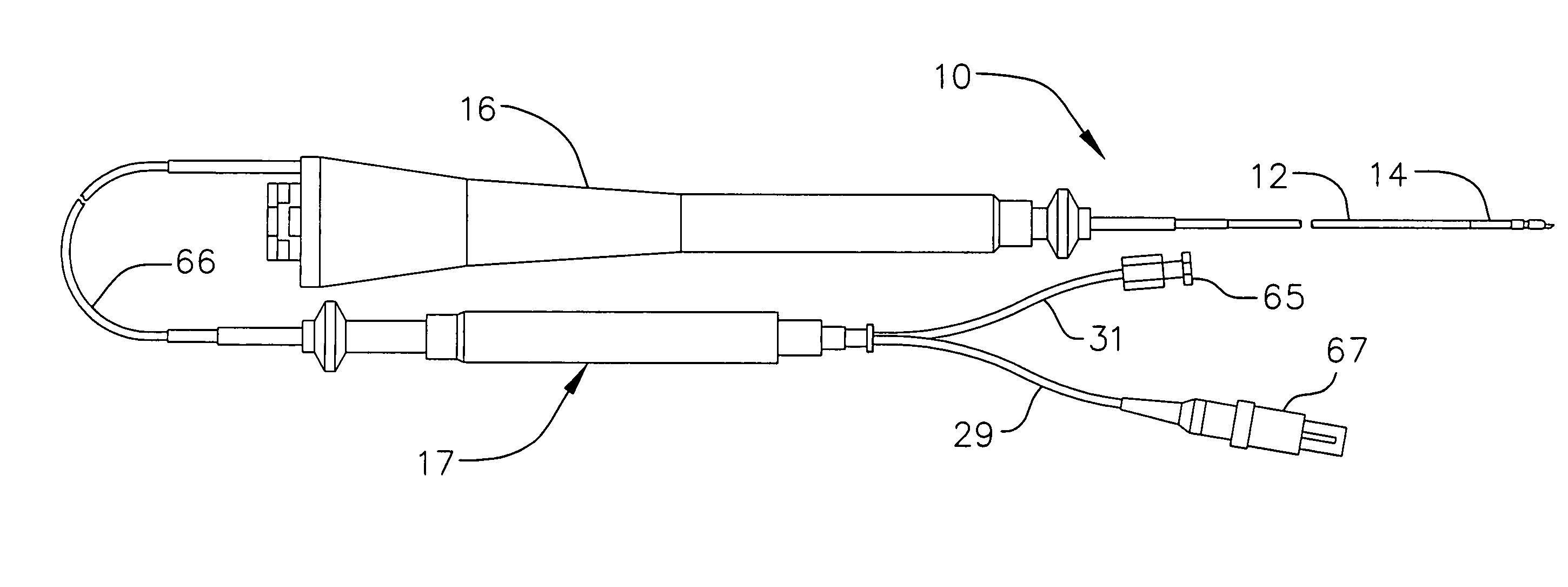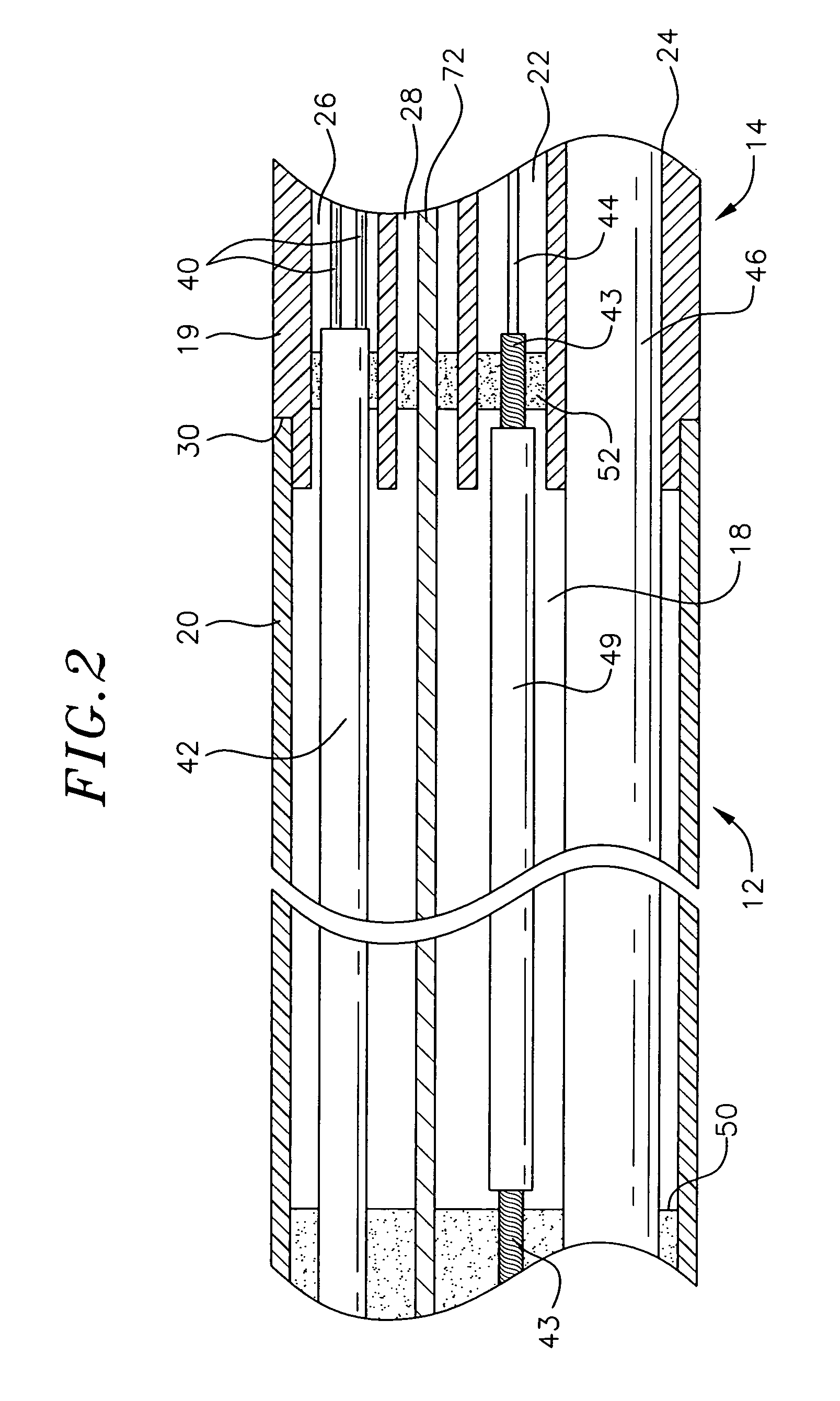Method for ablating with needle electrode
a technology of needle electrodes and electrodes, applied in the field of enhancement ablation, can solve the problems of limited current delivery, uncontrolled tissue destruction or undesirable perforation of bodily structures, and the heating of electrodes, so as to increase the effective size of electrodes, increase the surface area, and increase the effect of resistive heating
- Summary
- Abstract
- Description
- Claims
- Application Information
AI Technical Summary
Benefits of technology
Problems solved by technology
Method used
Image
Examples
example 1
In Vitro Needle Ablation Studies
[0073]Feasibility studies of delivery of radiofrequency (RF) ablative energy to tissue using a catheter having a needle electrode were carried out using bovine myocardium in room temperature 0.9% NaCl solution. RF energy was delivered using a Stockert 70 RF generator. Tissue overheating and pops occurred at relatively low power outputs. Steam pops tended to occur when power was higher, but this did not reach statistical significance (p=0.183). See FIG. 9. It was determined that lesions could be created and had depth to the full extent of needle penetration, but lesion diameter was limited by impedance rises and tissue overheating, with subsequent current limitation. RF lesion diameter increased with average power delivered and with maximum power delivered. Lesion size plateaued after 30 to 60 seconds of RF application, and increased with power delivered, reaching a plateau at 8 to 10 Watts. See FIG. 10. Lesion depth was limited only by needle length.
example 2
In Vivo Needle Ablation Studies
[0074]In vivo temperature-controlled needle ablation lesions were performed in anaesthetized swine. The catheter was introduced into femoral vessels and navigated using fluoroscopy and electroanatomic mapping. The distal end was placed in contact with and perpendicular to the endocardium. The needle electrode was extended 10 mm, and RF energy (500 kHz, Stockert-70 RF Generator, Freiburg, Germany) was delivered between the needle electrode and a skin electrode for 120 second applications. Temperature was monitored using the thermocouple within the needle electrode, and power was titrated manually to maintain temperature at or below 90° C. Control lesions were created with a standard ablation catheter under temperature control titrated to maintain tip temperature at or below 60° C. for 120 second applications. Thirteen needle ablations and nine control lesions were available for analysis. The animal was sacrificed, and the lesions were identified and exc...
example 3
In Vitro Needle Infusion Ablation Studies
[0076]In order to increase lesion dimension, the size of the area of resistive heating needed to be increased. Infusion of ionic solution through the needle electrode into the tissue of interest increased the size of the virtual electrode, increasing conductance in the area immediately surrounding the ablating needle electrode. This shifts the site of the steepest gradient of resistance, and thus the zone of resistive heating farther from the electrode and creates a larger area of resistive heating, and consequently a larger area of conductive heating. Bovine myocardium strips were immersed in ionic solution at room temperature. The needle electrode was deployed within the tissue, and 0.9% NaCl solution was infused at 1 mL / minute and 2 mL / minute with serial observations of the impedance recorded. The initial impedance fell by approximately 20 ohms during the first 20 seconds of infusion and then relatively plateaued during the rest of 120 sec...
PUM
 Login to View More
Login to View More Abstract
Description
Claims
Application Information
 Login to View More
Login to View More - R&D
- Intellectual Property
- Life Sciences
- Materials
- Tech Scout
- Unparalleled Data Quality
- Higher Quality Content
- 60% Fewer Hallucinations
Browse by: Latest US Patents, China's latest patents, Technical Efficacy Thesaurus, Application Domain, Technology Topic, Popular Technical Reports.
© 2025 PatSnap. All rights reserved.Legal|Privacy policy|Modern Slavery Act Transparency Statement|Sitemap|About US| Contact US: help@patsnap.com



